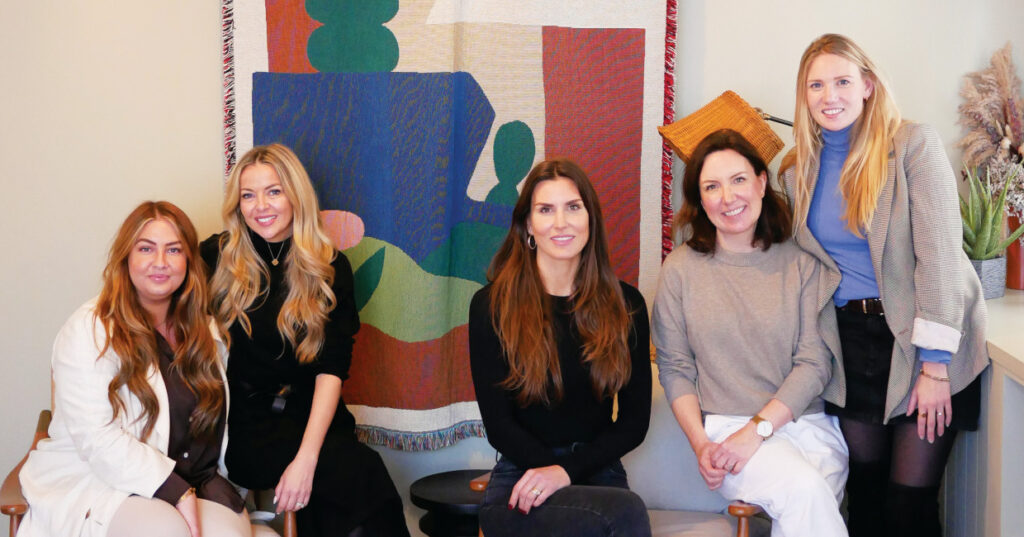Furnishing Futures is a London-based charity supporting women and children fleeing from domestic abuse. Vicky Doe met with Emily Wheeler to talk about how the hospitality interiors industry could support this vital service whilst also meeting sustainability targets.
The Office for National Statistics reports that 2.1 million people ages 16 years and over (1.4 million women and 750,000 men) experienced domestic abuse in the year ending March 2023. This shocking statistic doesn’t take into account the millions of children who are also caught up in these often dangerous and unbearable situations.
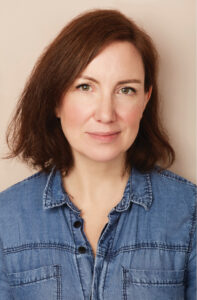
Having witnessed the aftermath left behind once women, particularly, have managed to flee and escape such horror, Emily Wheeler knew that she had to help, so she created Furnishing Futures. The organisation works alongside interior designers to create trauma-informed designs, transforming the empty properties that the families are allocated from the local authority. Furnishing Futures utilises donations from the interior design industry to turn these unfurnished shells into warm, welcoming homes where the women and children can begin to rebuild their lives.
Emily explained that the conditions women and families were living in were awful, and there was little support out there: “I spent 20 years in frontline child protection work where I was chairing Multi-Agency Child Protection conferences and meeting women and families who were living in appalling conditions without any furniture, often without white goods, or appliances, and specifically a number of women who were supported to leave dangerous, abusive partners. These women and their children had been placed in empty social housing, and we couldn’t find anywhere to get support for them with furniture.”
Emily had taken a career break and trained as an interior designer, she then spent five years as an interiors journalist and stylist. “I knew how much waste there was in the industry, so I knew that there was a grain of an idea of something that could solve the problem being faced by these families.”
The organisation has grown quickly since becoming a registered charity two years ago, with support from the local community and interiors industry. Emily explained how the service works: “We create professionally designed, trauma informed, fully furnished and decorated homes for women and children who have been rehoused into social housing after escaping domestic violence. We do that by partnering with the interiors industry to reduce waste.
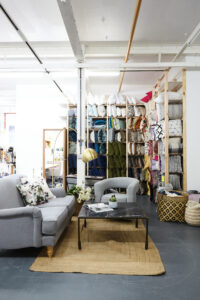
“Our partners in the industry could be brands, retailers, design studios, stylists, also just members of the public who donate good quality furniture to us that is essentially in new condition. Often the furniture is completely new, it might be dead stock, excess stock, it might have been used for an event or a press shoot or it might be ex-show room, ex-display, it could be a return, a second, a sample. We take that furniture and we use it to create homes for women and children who have lost everything.”
The support doesn’t stop there: “We don’t just give furniture, we also provide and fit the flooring, we decorate the homes and we provide everything that they need to start again in a wraparound holistic sense. We buy new appliances, but we also give all the pots and pans, the plates, the cutlery, the washing up brush, absolutely everything! We provide the beds, but we also provide spare sets of bed linen, cushions and bedspreads. We provide books and laptops for children. It’s basically a ready-made home, built on what she’s asked for and what she and her family needs, so that she doesn’t have the financial stress of having to do it herself.
“We also have a specialist support worker who provides things like risk assessments, safety planning, onward referrals, and any kind of support that the woman might need from the point at which we start working with her because the domestic abuse agencies who make the referrals for us often only support women for up to 12 weeks. Once the woman goes into a new home, often all the support finishes, so we pick up from there, and we essentially give her a fresh start.”
At the moment, the charity is based in East London working within a catchment area that tends to be based on capacity, but the plan is to expand across London within the next three years. There are also plans to launch nationally within the next 10 years.

I asked about numbers – how many homes are being developed at one time? Emily explained: “We tend to be working with eight to 15 women at any one time, fitting one home a week. So, 40-50 homes per year. But we also support many more families who perhaps just need a few things or need remote support. For example, last winter, we supported 300- 400 local families who needed support with things like warm blankets, hot water bottles, rugs and we did that in partnership with the Baby Bank. We do sometimes distribute things through grassroots partners too.
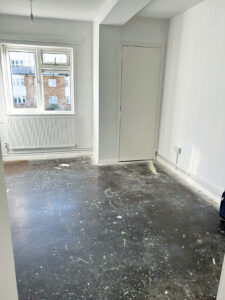
“Our support depends on the woman’s situation – sometimes a woman might be in emergency accommodation, and she only needs a few things. Sometimes we support women who are in temporary accommodation, where maybe there’s flooring, but no furniture, and then there are women who are given secure tenancies. Those are the ones that come without the flooring, with no painting having been done, no cooker or anything, they’re just a bare shell. More recently, we’ve also been working with Women’s Refuge providers, and we’ve transformed four women’s refuges across London.”
With so many projects on the go and the need for the service growing, Emily has had to plan her team carefully. She explained: “We have five members of staff and then we have about 300-400 people on the volunteering database. But that is made up of about 15 regular volunteers and then lots of volunteers who have specific skills who help on an ad-hoc bases, like law, strategy and fundraising, and we call on them as and when we need them.”
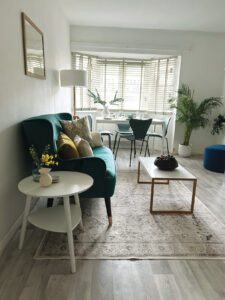
With such demand for the charity, I was keen to hear about how the interiors industry can support such a vital service – what is required? “We have a list. But essentially, we are looking for furniture that meets fire safety regulations, that is in or appears to be a new condition and that is suitable for a small home with children. So it has to be residential-style furniture but we look for things that are beautiful and aesthetically pleasing. We design in a trauma informed biophilic way – we’re trying to make homes that feel like homes. So we’re looking for things like children’s beds, double and king size bed frames, two and three seater sofas, small dining tables, dining chairs, bedside tables, table lamps, rugs, cushions – basically anything that you would put in a home, we take. We don’t take glass furniture for safety reasons or anything that’s really big or really heavy, because access is often an issue.”
And how could people get involved? “Get in touch via the website,” Emily said. “We have a specific email address for donating furniture. The most helpful thing is if people can send photographs and dimensions and then we can respond and let them know whether or not there are things that we can take.”
Emily explained that by supporting the charity, business can also boost their sustainability efforts through the reuse of goods. “We’re essentially a reuse charity. Last year, we saved 47,000 kilogrammes of furniture from landfill and 80 tonnes of co2 from the atmosphere. So in terms of sustainability, I think that what we offer to our partners is the opportunity to save all of this furniture from landfill, but also the opportunity to do something that creates really powerful social and environmental impact with their donation.
“The furniture that we use is going to a really good cause. If there we are given items that we can’t use, we resell it and use that to raise funds for the charity as well. So we’re able to make good use of whatever donations either by using them in homes, or by selling it to raise funds for the work that we do, in which case it’s still part of the circular economy.”
With demand for service being provided by Emily and her team rising, the need for donations also rises. If you are able to support in anyway, or would like more information about the charity, please visit the website:


